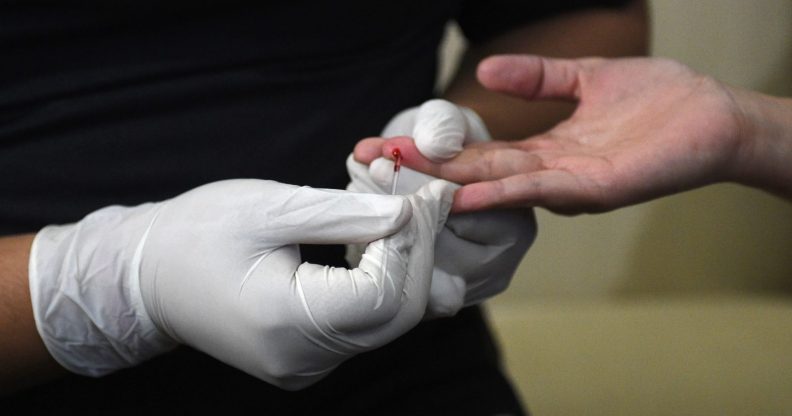What is HTLV-1? The virus which is a ‘distant cousin of HIV’

A blood test for HIV (TED ALJIBE/AFP/Getty Images)
A little-known but deadly virus distantly linked to HIV has made headlines recently after experts urged action to fight its high prevalence in parts of rural Australia. But what is HTLV-1?
Human T-lymphotropic virus type 1 (HTLV-1) causes “devastating, disabling or fatal diseases” in about 10 percent of those infected, according to scientists at Imperial College London, which houses one of the world’s leading research centres for the condition.
It can trigger leukaemia or a chronic inflammation of the central nervous system which leads to paralysis of the legs.
Among some badly-affected indigenous Australian communities, it causes bronchiectasis, or enlargement of the airways or lungs which can lead to coughing up blood.
There is no effective treatment or cure and, like HIV, it is spread through contaminated blood and unprotected sex as well as breast milk. Unlike HIV, however, symptoms can take up to 30 years to emerge after infection.

Aboriginal communities in central Australia, near Alice Springs, have recently been found to have alarmingly high infection rates (Getty)
The virus was discovered in the 1980s, but scientific interest has focused on the once far more prevalent HIV virus.
According to Imperial College’s National Centre for Retrovirology, it is a “distant cousin” of HIV and is widespread in sub-Saharan Africa, Latin America, the Caribbean and central Australia.
In Japan, a major awareness drive has cut the transmission rate by 80 percent in the last 20 years. But other countries have been less cautious.
Related: HIV positive man opens up about diagnoses to combat stigma
In Australia, which has recently put HTLV-1 back in the headlines, researchers found a shockingly high infection rate of 45 percent in five Aboriginal communities around Alice Springs.
Professor Graham Taylor, who heads up Imperial College’s specialist unit, told CNN the finding was “extraordinary.”
He said: “It’s causing a problem of bronchiectasis. People are dying of bronchiectasis in association with HTLV-1 infection, and what is the response? If you can’t see a response, then you might say it’s neglected.
“The virus is neglected, and the diseases that it causes are neglected.”
Related: Grindr finally apologises after HIV data row
However, most affected communities are fairly remote and experts are not concerned about a global epidemic.
In the UK, an estimated 20,000-30,000 people have been diagnosed as HTLV-1 positive, which puts it in the rare disease category.

